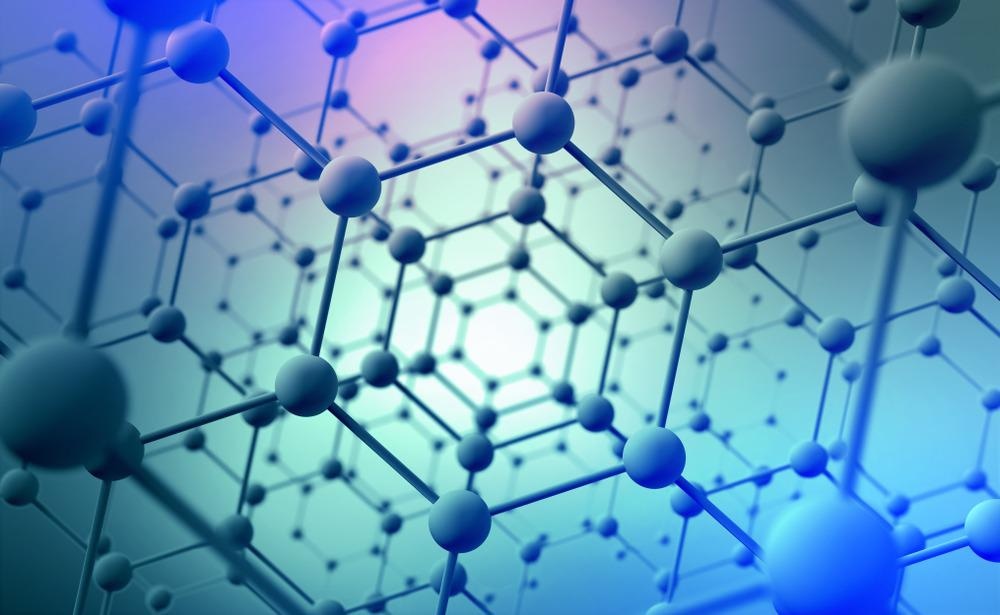In a study recently available as a pre-proof in the journal Materials Research Bulletin, a unique technique for producing nanostructured carbon from carbides was established, as well as a method for the generation of nanostructured carbon during the process.

Study: Synthesis, Characterization and Performance of Nanostructured 2D Turbostratic Graphite Particles Derived from the Solid-State Reaction Between Carbides. Image Credit: Yurchanka Siarhei/Shutterstock.com
Numerous Methods for Producing Nanosized Carbons
Nanostructured carbon atoms are a diverse class of materials ranging from very disorganized to highly organized carbons. There are numerous methods for producing nanosized carbons, such as laser technique and ECR plasma bombardment. Carbide-derived carbons (CDCs) may be created by selectively removing ferrous or quasi atoms from the framework of carbon steels. Various chemical reactions and physical methods may be used to synthesize carbide-derived carbons.
Hydrogenation is the most prevalent synthesizing procedure, and it is still regarded as the most inexpensive and efficient currently. This method involves the interaction of a trivalent carbide with a halogen gas at extreme temperatures. Throughout this procedure, halogen gas has a specific interaction with metals chemically connected to carbon, resulting in the formation of a flammable metallurgical molecule. Carbon, on the other hand, persists as a solid substance within the reaction media.
The primary benefit of carbide-derived carbons films is the ability to access tweakable nanostructured carbon films accumulated on wear-resistant surfaces with elevated physical and chemical bond formation between the film and the adsorbent. Furthermore, the use of physically durable carbides permits these films to be used in abrasive conditions. Their large surface area also means that these substances show promise in energy conversion systems.
In most cases, the halogen gas employed in the reaction is chlorine gas (Cl2), and the procedure is referred to as chlorination. The by-products of the interaction among metallic cementite and chlorine gas are generally tetrachlorides. Nevertheless, the use of chlorine gas for carbide-derived carbons production has a range of great issues due to its poisonous and abrasive properties.
The system must be constantly monitored for reliability, and the gear deteriorates quickly due to gas penetration. As a result, the procedure needs more complex and secure gear, increasing the operation's cost.
Solid-State Approach
The solid-state approach is a more cost-effective and safe way for producing carbide-derived carbons on a big scale. It is built on particle interaction, proceeded by carbon separation and by-product removal. Moreover, there are currently few studies in the literature that apply this technique.
Previously, novel carbide-derived carbon manufacturing pathways were created using the solid-state interaction among iron and silicon carbide nanoparticles. Although it was feasible to create carbide-derived carbons layers of nanosized thicknesses in this study, the greatest carbon production of this process is only around 5 %.
Another approach that was created was the creation of carbide-derived carbons from the combination of silicon carbide and nickel powders. In this study, the process was carried out utilizing a heat treatment, resulting in the formation of graphene and iron silicides.
The silicides were decomposed in nitric acid and hydrogen peroxide after the process, yielding just one solid material: the carbide-derived carbons. This approach resulted in single and bilayer graphite layers of micrometric thickness with the reaction detailing a carbon yield of around 3 % by weight.
According to the scientists, the creation of nickel silicides at the contact during processing functioned as a barrier membrane for the activity, slowing it down.
Achieved Outcomes of the Study
There is currently no single approach that provides for the production of high-yielding, low-cost carbide-derived carbons without the need for costly equipment or the release of gaseous pollutants. This research described a unique solid-state approach for producing high-yielding carbide-derived carbons.
Rather than synthesizing carbide-derived carbons by the interaction of transitional metallic particles and carbides, this effort attempted to enhance the production of carbide-derived carbons through the interaction of two carbides. As a result, it was feasible to obtain carbon from both carbides at the same time, boosting the process yield.
Initially, research based on thermal simulations revealed that the B4C-Cr3C2 combination had a high tendency to produce carbide-derived carbons. The next study concentrated on creating and improving the methodology from this interaction, physical characterization of the produced nanostructured carbon, and tribological efficiency analysis of this unique material.
A unique solid-state synthesis involving chromium and boron carbides was used to synthesize nanosized carbon, and a method for the production of the nanoparticles in this reaction was postulated. This technique yielded much more carbon than other solid-state procedures described in the literature.
The carbon yield of the technique described in this study is equivalent to that of classic carbide-derived carbon-producing technologies such as chlorination.
Reference
Neves, G. O., Araya, N., Mello, J. D., Binder, C., & Klein, A. N. (2022). Synthesis, Characterization and Performance of Nanostructured 2D Turbostratic Graphite Particles Derived from the Solid-State Reaction Between Carbides. Materials Research Bulletin. Available at: https://www.sciencedirect.com/science/article/pii/S002554082200099X?via%3Dihub
Disclaimer: The views expressed here are those of the author expressed in their private capacity and do not necessarily represent the views of AZoM.com Limited T/A AZoNetwork the owner and operator of this website. This disclaimer forms part of the Terms and conditions of use of this website.